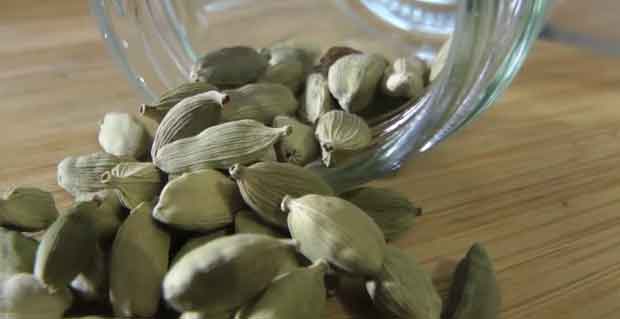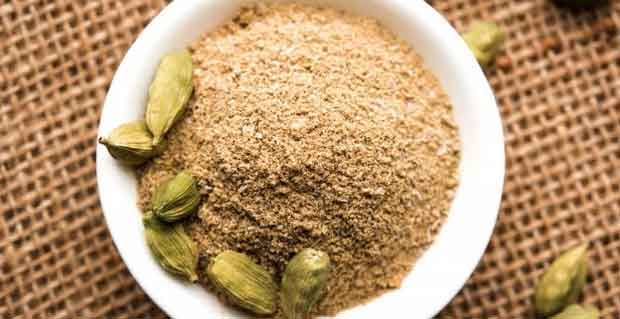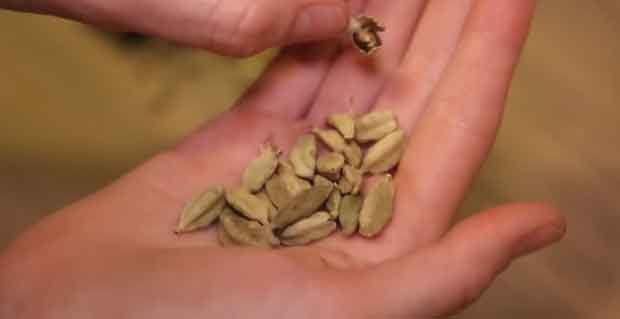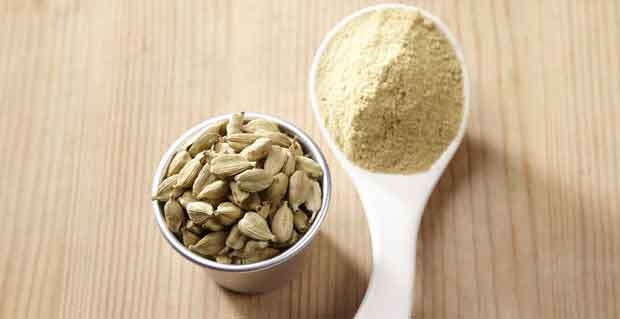Cardamom is a spice with a distinctive, sweet aroma and flavor.
Cardamom has been used in cooking for centuries, especially in Indian and Arabic cuisine, where it's used as both a seasoning and as part of many dishes. You can find it at any supermarket or specialty store that sells ethnic foods.
In our article, we explore what cardamom pods are and why they differ from ground cardamom. And why you should use them instead of their ground counterparts (and vice versa).
Cardamom pods

These are the dried seeds from a plant in the ginger family. It can be any color, size, or shape, depending on where they're grown and how old they are when harvested.
Cardamoms come from India's Kerala region, which handles two-thirds of all exported around the world today. It has an intense aroma and flavor that has been compared to black pepper but smoother with less heat.
Both sweet and savory dishes can use them, but they are most often associated with sweets, such as desserts like baklava or Persian cakes. These are also used in dishes like curries, rice pilaf, and meatballs.
Ground Cardamom

Ground Cardamom is made from grinding cardamom pods into a fine powder. Ground Cardamom has an earthy, slightly peppery, and sweet taste that's more subtle than the bold flavor of Cardamom Pods.
There are two common forms of ground cardamoms: green cardamom and brown cardamom.
The green cardamom variety is often used in Indian cooking. It pairs well with heavy spice dishes like vindaloo or garlicky curries while still mild enough to use in desserts such as rice pudding or custard cakes.
Brown Cardamom can be found in Thai cooking, where it's traditionally used in tea blends or curry sauces because of its lighter flavor profile, which doesn't overpower more delicate flavors like Thai cuisine.
Facts about Cardamom pods vs ground Cardamom
Let's check out the facts on Cardamom pods vs. ground
Uses of Cardamom pods

These are great for seasoning dishes and desserts.
It can flavor a variety of different cuisines, including Indian, Arabic, Persian and Scandinavian cooking. With it, you can make both tea and chai.
Uses of Ground Cardamom

Ground Cardamom is often found in baking. Especially desserts like rice pudding or custard cakes and tea blend or curry sauces are less intense than Cardamom pods.
It also appears in savory recipes such as curries with its earthy taste that integrates nicely into the dish without overwhelming other flavors.
Additional Tips
When using Cardamom Pods, be careful not to overheat, as it will cause their oils to evaporate and alter their taste. Overcooking at high temperatures, such as frying, can cause this.
If your food gets overheated, don't despair. Adding some sugar should make for an easy fix as its sweetness will cover Pod's natural bitterness.
It has a more robust flavor than their grounded counterparts, but this doesn't mean they're better. When cooking dishes where depth is needed, for example (curry sauces), it's best to use more grounded Cardamom instead of Cardamom pods, which will just add another layer on top.
FAQ's About Cardamom Pods vs. Ground Cardamom
Listed below are some frequently asked questions that may be helpful to you.
1. Can I use ground cardamom instead of pods?
You can substitute cardamom pods for ground cardamoms in savory dishes or when cardamom pods are used as a spice in baking and desserts.
2. Can I substitute Cardamom pods for ground cardamom?
Yes, you can, but it depends on what kind of flavor profile your food will need. If depth is required, use more grounded Cardamom than Pods because it will add another layer instead. For something like rice pudding, that doesn't need much seasoning with spices.
3. How much ground Cardamom should I use?
It depends on the recipe, so you'll have to follow instructions from there for that specific dish. You can do a taste test and figure out how much is needed before adding it to your food if you're unsure what amount will work best.
4. Do you grind cardamom seeds or pods?
You can grind Cardamom pods for Cardamom seeds, but ground Cardamom is made by grinding cardamom pods.
5. What's the difference between green and brown Cardamom?
The difference between green Cardamom and brown Cardamom is that Green Cardamom pairs better with heavy spice dishes like vindaloo or garlicky curries. At the same time, Brown Cardamom is used in Thai cooking because its lighter flavor profile doesn't overpower the food.
6. How do I make Cardamom tea?
To make Cardamom Tea, you'll need to boil water and add Cardamom pods (or ground cardamoms) depending on how much spice your dish requires. Add sugar if desired.
Bring it all to a rolling boil for about five minutes before pouring into cups or mugs and adding milk as needed for individual preferences. Increase boiling time according to preference and taste buds. In addition, this will intensify the flavors more than long-simmering times would.
7. How do I know when Cardamom Pods are bad?
If Cardamoms have lost their shape and the color has faded, then they're probably not very fresh anymore. The flavor will also change as well if they've been sitting around for too long before use. So test it out to see how much you'll need first before buying more.
8. How do you store cardamom pods or ground cardamom after opening?
If storing cardamom pods in an airtight container or well-sealed bag, they will last about 12 months. Still, they should always be kept away from sunlight to prevent oxidation, which speeds up deterioration.
If using ground cardamom, it's best to buy small amounts every few weeks, as this type has a shorter shelf life. Ground cardamom typically only lasts about two months.
Last Thoughts
Knowing the differences between cardamoms is vital before you cook with them. We hope this post was helpful, and we can't wait to hear what you think about Cardamom pods versus ground.



